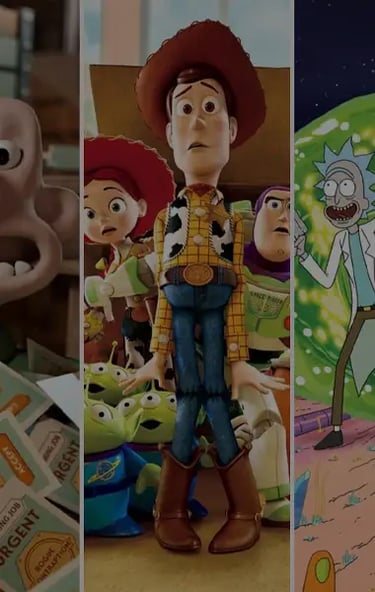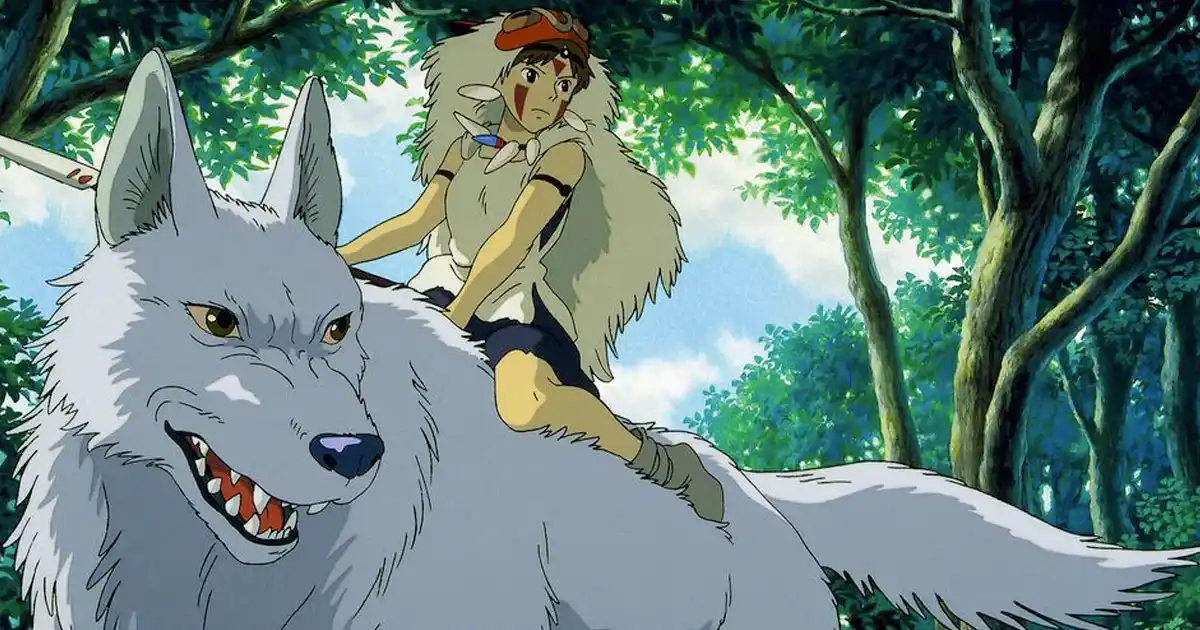
Top 6 types of animation
4minutes read
11/28/2022
There’s no feeling like making lines and shapes come to life on the screen. Animation is the art of breathing life into the inanimate for films, games, and advertising. The career possibilities in animation are growing each year as new techniques, processes, and genres emerge.
In this article, we’re going to look at six types of animation:
Traditional animation
Traditional animation (also known as cel animation) is hand-drawn. It’s how they made classic films like Snow White and the Seven Dwarfs and Sleeping Beauty. Each animated component is painted on a separate layer of transparent sheets (known as cels) so they can be animated separately. For example, the background scene, which doesn’t move, would be the base layer, and the characters and any other moving objects would be drawn on transparent sheets placed on top. That way, they can be animated without the background or other characters and props moving at the same time.
A short video on how Snow White was created with traditional cel animation.
Due to its complexity and time-consuming process, it’s an animation style rarely used today.
2D Animation
2D Animation is the art of creating movement by combining a sequence of images together in a two-dimensional space. One second of animation is equal to 24 pictures (or frames), but most 2D animation usually only animates every second frame (12 frames total). It's enough to create the illusion of movement without needing to animate all 24 frames.
The animator can also create characters using digital rigging. This allows them to create a “skeleton” of the character and tell the computer which body parts to animate. It's a huge time-saver for animators, who don’t need to redraw the character for every frame.
Short animation by Advanced 2D Animation Course student Jessica Serra.
History: In the past, this style was drawn by hand, which is very time-consuming, requiring 24 frames of art per second of finished animation. Today, it’s streamlined by using digital tools and techniques. With Toon Boom Harmony, animators could cut down the required frames from 24-12 per second, with the software dynamically filling in the gaps for the animator.
Software:
Learn more about what a 2D animator does in games and film.
[featured]
3D Animation
3D Animation is the art of bringing digital characters, vehicles, props, and full scenes to life in a virtual 3D space. It’s more mechanical and technical than 2D animations and requires input from other departments to create 3D models and complex character rigs.
3D animation lets you drop your 3D rigged model into a digital scene and manipulate it. You can optimize the process by setting keyframes for key actions and allowing the animation software, such as Maya, to fill in the frames between.
Another important distinction between 2D and 3D animation is that with 2D animation, you only create one side of the character (the side facing the camera). In 3D animation, the 3D character rig is designed so it can be viewed from any angle, making it helpful for 3D worlds like in games like Grand Theft Auto, where your character can walk 360 degrees around an asset and see all angles.
3D animation by Luise Zimmermann as part of CG Spectrum's Advanced 3D Animation Course.
History: Pixar revolutionized the animation industry with their blockbuster Toy Story, the first feature-length animated 3D film. These digitally created worlds and assets had previously been used in shorter animations like commercials (check out the first 3D animated M&M ads from the nineties), but Toy Story opened the world to more realistic animations where lighting, movement, and character emotions were more lifelike than ever before.
Today studios are making fully 3D animated movies, integrating 3D computer-generated elements into live-action scenes, and incorporating motion capture animations into 3D graphics, as well as virtual production techniques.
Software:
Learn more about what a 3D animator does in games and film.
Motion Capture
Motion capture helps enhance the realism of 3D animations. It's used in movies like Avatar and Lord of the Rings and video games like LA Noire and Grand Theft Auto. Actors wear bodysuits containing special sensors and act out a scene. The motion capture animation software translates the motions from the sensors into a digital version. There is also software that can capture facial expressions to help convey the emotions and nuances of an actor more accurately.
An animator is pivotal to the motion capture process — they will ingest the recorded data (into software like Blender, Maya, 3dx Max, or Motion Builder), which includes retargeting the character rig (i.e. attaching the existing character rig to the mocap animation), cleaning it up, and refining it to make sure it's in line with the character the motion capture is being used for.
How motion capture was used in the video game LA Noire.
Motion Graphics
Motion graphics animation is how you animate text logos and basic illustrations. They’re commonly seen in animated logos, opening and closing film and TV credits explainer videos, and the graphics you see on top of sports plays on TV. These can be done as either 2D or 3D graphics.
Like 2D and 3D animations, motion graphics are created by designing frames and using tweens (the process animation software uses to generate images between keyframes for a smooth transition) to simulate smooth motion between the frames.
An early example of motion graphics used for the opening credits of Alfred Hitchcock's Psycho.
Stop Motion
Stop motion is a series of still images filmed, or shot, sequentially to simulate action. It’s how movies like Tim Burton's Nightmare Before Christmas and the classic Burl Ives' Rudolph the Red‐Nosed Reindeer animated cartoon were created. You can create this animation style with real actors, clay figurines, or even toys and other props. The opportunities to use stop motion are only limited by your imagination.
Creative stop-motion short Fresh Guacamole by Adam Pesapane, which was nominated for an Academy Award in 2001.
Learn how to animate from industry pros!
No matter what stage you are in your animation career, learning from professional film and game animators is a great way to hone your skills. CG Spectrum's animation mentors have worked on some of your favorite films, TV series, and games, which allows them to pass valuable real-world knowledge and insights onto their students.
Whether you want to learn 2D animation or 3D animation in film and TV or in video games, CG Spectrum has courses to suit your skill level and focus.
[more]Read Shoshanah Wall's bio[/more]
Shoshanah has almost a decade of visual effects production experience, coordinating VFX teams in Australia and London. Her credits include Mad Max: Fury Road, Ant-Man, John Wick: Parabellum, Game of Thrones, and Christopher Robin. She now enjoys getting to write about the film and games industry.

7 minute read
What is the best 2D animation software? Experts choice

Plus artist interviews, free resources, career advice and special offers from CG Spectrum's film and game experts!
Recommended for you!
Free Animation resources and articles to inspire you on your journey into the film and games industry.













